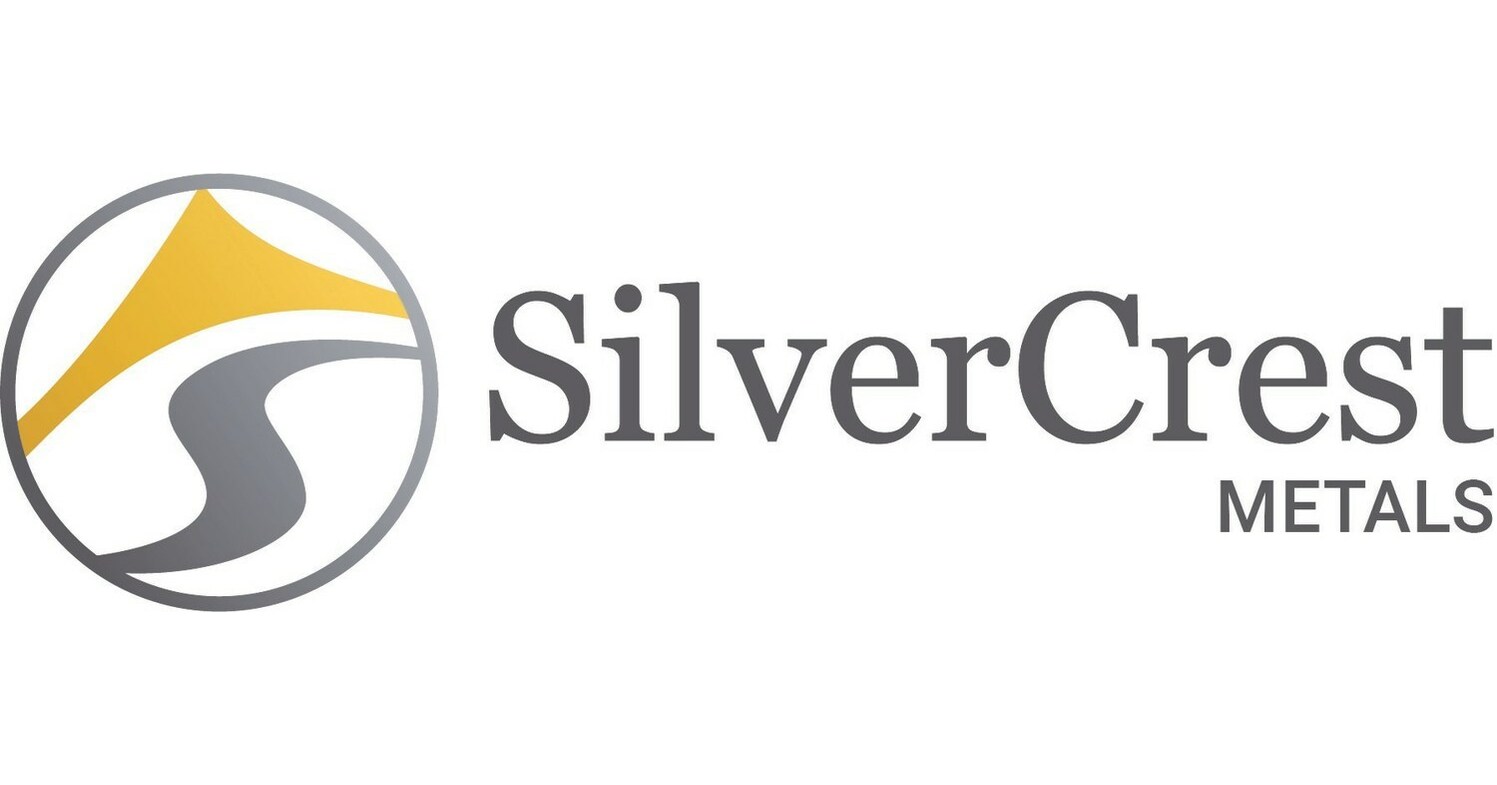(Money Metals News Service) In a recent episode of the Money Metals podcast, host Mike Maharrey interviewed Chris Ritchie, President of SilverCrest Metals.
SilverCrest Metals, headquartered in Vancouver, British Columbia, is a precious metals producer known for its efficient and cost-effective mining operations.
The discussion covered the company’s operations, financial strategies, and broader perspectives on the mining industry and precious metals.
Who is Chris Ritchie?

Chris Ritchie is President of SilverCrest Metals, a financial markets professional with 15 years of experience in resource-based capital markets including investment banking, marketing, corporate strategy, network and risk management. Mr. Ritchie earned a BA from Miami University (Ohio) in 1997 and an MBA in finance from Dalhousie University in 2000.
Overview of SilverCrest Metals

Founded in 2016, SilverCrest Metals has made significant strides in the mining industry, achieving production in just nine years, compared to the industry average of 16 years.
The company trades on the New York Stock Exchange under the ticker SILV and the Toronto Stock Exchange under SIL, boasting a market cap of approximately $1.4 billion USD.
In a recent quarter, SilverCrest Metals reported a strong performance, surpassing consensus estimates and maintaining a robust balance sheet with $90 million, including $20 million in bullion.
Unique Approach to Precious Metals
Unlike many mining companies, SilverCrest Metals holds a portion of its reserves in physical gold and silver. Ritchie explained the mechanism behind this strategy: the company sells its refined product and then buys back gold and silver as part of a currency transaction.
This approach allows SilverCrest to provide investors with direct exposure to precious metals, leveraging them as a store of value against the depreciating fiat currency.
The company holds these metals in a bank account, fully allocated and not lent out, to ensure liquidity and value preservation.
Economic Perspectives and Inflation Hedging

Ritchie emphasized the importance of considering gold and silver as sound money and effective hedges against inflation. Over the past 16 years, the average annual rate of inflation in the mining industry has been 8%, mirroring the rate of money printing.
This has resulted in significant increases in costs, such as housing prices in Toronto, which have also risen by approximately 8% annually.
By holding gold and silver, SilverCrest aims to mitigate the impact of inflation and provide long-term value to its investors.
Operational and Financial Metrics
SilverCrest Metals has demonstrated strong operational efficiency with an all-in sustaining cost of $12.90 per ounce of silver equivalent. However, Ritchie pointed out that this figure excludes several significant expenses, including property acquisition, exploration, and plant construction costs.
When these factors are included, the total cost per ounce rises to approximately $25 before tax. Despite these costs, SilverCrest has maintained high operating margins of around 60% for the past several quarters, enabling the company to pay off debt quickly and focus on strategic growth.
Advocating for Industry Change
Ritchie highlighted the broader implications of SilverCrest’s approach, advocating for more mining companies to adopt similar strategies. By holding precious metals and improving capital allocation, mining companies can enhance their financial stability and provide better returns to investors.
He criticized the short-term focus prevalent in the financial community, urging a shift towards long-term thinking and better risk management.
Key Questions and Answers

You guys hold some of your cash reserves in physical gold and silver. How do you do it?
SilverCrest sells its refined product and then buys back metal as part of a currency transaction. They treat gold and silver as a currency, holding it in a bank account, fully allocated and not lent out, to provide more exposure to precious metals and protect against costs.
This approach challenges the default notion of converting products into dollars, instead preserving value in precious metals.
Is gold and silver a better store of value than fiat currency?
Ritchie affirmed that gold and silver are better stores of value than fiat currency, which has consistently failed to preserve purchasing power over the long term.
SilverCrest, operating in a long-term, capital-intensive industry, uses precious metals to protect against inflation and provide long-term value to investors.
What is the rate of money printing and inflation in the mining industry?
The rate of money printing and inflation in the mining industry is about 8% per year. This rate matches the annual increase in housing prices in Toronto over the past 16 years, highlighting the devaluation of fiat currency rather than an increase in asset value.
Gold has outperformed housing, underscoring its effectiveness as a store of value.
What is the annual increase in gold mine production and the US dollar supply?
The annual increase in gold mine production is about 1-1.5%, while the US dollar supply increases by about 8%. From 1960 to 2015, the average supply growth of 160 fiat currencies was over 32% per year.
This highlights the contrast between the constrained supply growth of gold and the unlimited supply growth of fiat currencies.
How do you determine the ratio of cash to precious metals on your balance sheet?
SilverCrest believes in the better store of value offered by precious metals. They calculated their total cost per ounce, including all expenses, at around $25 before tax.
By holding precious metals equivalent to their operating costs, they hedge against inflation. They aim to maintain this ratio to give their investors more exposure to precious metals and less exposure to fiat currency risks.
Why don’t more mining companies adopt this strategy?
Most mining companies do not have the high-quality assets and margins that SilverCrest enjoys, which limits their flexibility. Many are focused on short-term survival, selling ounces to pay bills.
Ritchie emphasized the need for the industry to hold precious metals at lower levels and improve capital allocation. SilverCrest is open to sharing its data and process to encourage industry-wide adoption of this approach.
Could this strategy potentially influence the broader public consciousness and monetary system?
Ritchie believes that every company with a long-term horizon should manage inflation risk by holding instruments like gold and silver. The financial community’s short-term focus hinders the understanding of long-term inflation impacts.
By showcasing the utility of precious metals, SilverCrest hopes to encourage more companies and individuals to consider gold and silver as sound money, potentially leading to a more stable monetary system.
How can people find more information about SilverCrest Metals?
Ritchie encouraged listeners to reach out to SilverCrest Metals through their website. He emphasized the company’s commitment to transparency and its willingness to share its process and data to foster a broader conversation about the benefits of holding precious metals.
How SilverCrest Metals Excels Above Other Mining Companies

SilverCrest Metals differentiates itself from other mining companies in several key ways:
1. Shorter Time to Production:
- Typical Mine Timeline: Most mines take about 16 years from initial exploration to production.
- SilverCrest Timeline: SilverCrest achieved production in about half that time, starting with their first drill hole in 2016.
2. High-Grade Deposits:
- Efficiency: The company benefits from high-grade deposits, meaning each shovel of dirt contains more gold and silver, leading to lower costs per ounce and better margins.
- Impact: This translates into a better balance sheet and more financial choices, enhancing operational flexibility.
3. Holding Physical Precious Metals:
- Strategy: Unlike most mining companies, SilverCrest holds a significant portion of its reserves in physical gold and silver.
- Mechanism: After refining their metals, they repurchase gold and silver, treating them as currencies. This approach protects against fiat currency depreciation and provides additional value to investors.
4. Financial Strength and Flexibility:
- Balance Sheet: The company reported having around $90 million on its balance sheet, with $20 million in bullion.
- Debt Management: They paid off all their debt within seven months of starting production, showcasing financial discipline and strength.
5. Focus on Long-Term Value Preservation:
- Inflation Hedge: SilverCrest’s strategy includes holding precious metals to hedge against inflation, which they calculated at around 8% per year in the mining industry.
- Operational Margins: With operating margins of about 60% over the last several quarters, they maintain high profitability and financial flexibility.
6. Challenging Industry Norms:
- Innovative Approach: SilverCrest challenges the default industry practice of converting refined metals into fiat currency, instead opting to hold metals as a store of value.
- Advocacy: They advocate for the industry to adopt similar practices, arguing that this would improve financial health and stability.
7. Investor Exposure:
- Enhanced Exposure: By holding precious metals, SilverCrest provides investors with more direct exposure to gold and silver, reducing reliance on fiat currencies.
- Comparison with Royalty Companies: They draw parallels to royalty companies, which are valued higher because they give investors more exposure to metals without production risk.
8. Strategic Use of Data:
- Cost Analysis: SilverCrest meticulously calculates the true cost of production, including property acquisition, exploration, and plant construction.
- Research and Comparisons: They analyze industry trends and historical data to inform their strategy, such as examining the long-term performance of gold versus fiat currency.
9. Promotion of Sound Money Principles:
- Philosophical Commitment: SilverCrest promotes the use of gold and silver as sound money, advocating for their use as a better store of value compared to fiat currency.
- Public Awareness: They aim to raise awareness about the benefits of precious metals, both within the industry and among the general public.
10. Corporate Responsibility:
- Board of Directors: SilverCrest’s board is committed to managing the company’s balance sheet with a long-term view, considering inflation as a core risk management function.
- Industry Leadership: They aspire to lead by example, encouraging other companies to adopt practices that enhance financial stability and investor value.
These factors collectively distinguish SilverCrest Metals as a forward-thinking and financially prudent company within the mining industry, emphasizing long-term value creation and sound money principles.
Conclusion

SilverCrest Metals stands out in the mining industry for its innovative approach to managing its resources and finances. By holding physical gold and silver, the company provides its investors with a hedge against inflation and a more stable store of value.
Ritchie’s insights underscore the need for broader adoption of such strategies within the industry to ensure sustainable growth and financial health.
For more information about SilverCrest Metals and their unique approach to precious metals, visit their website and explore their investor resources.

